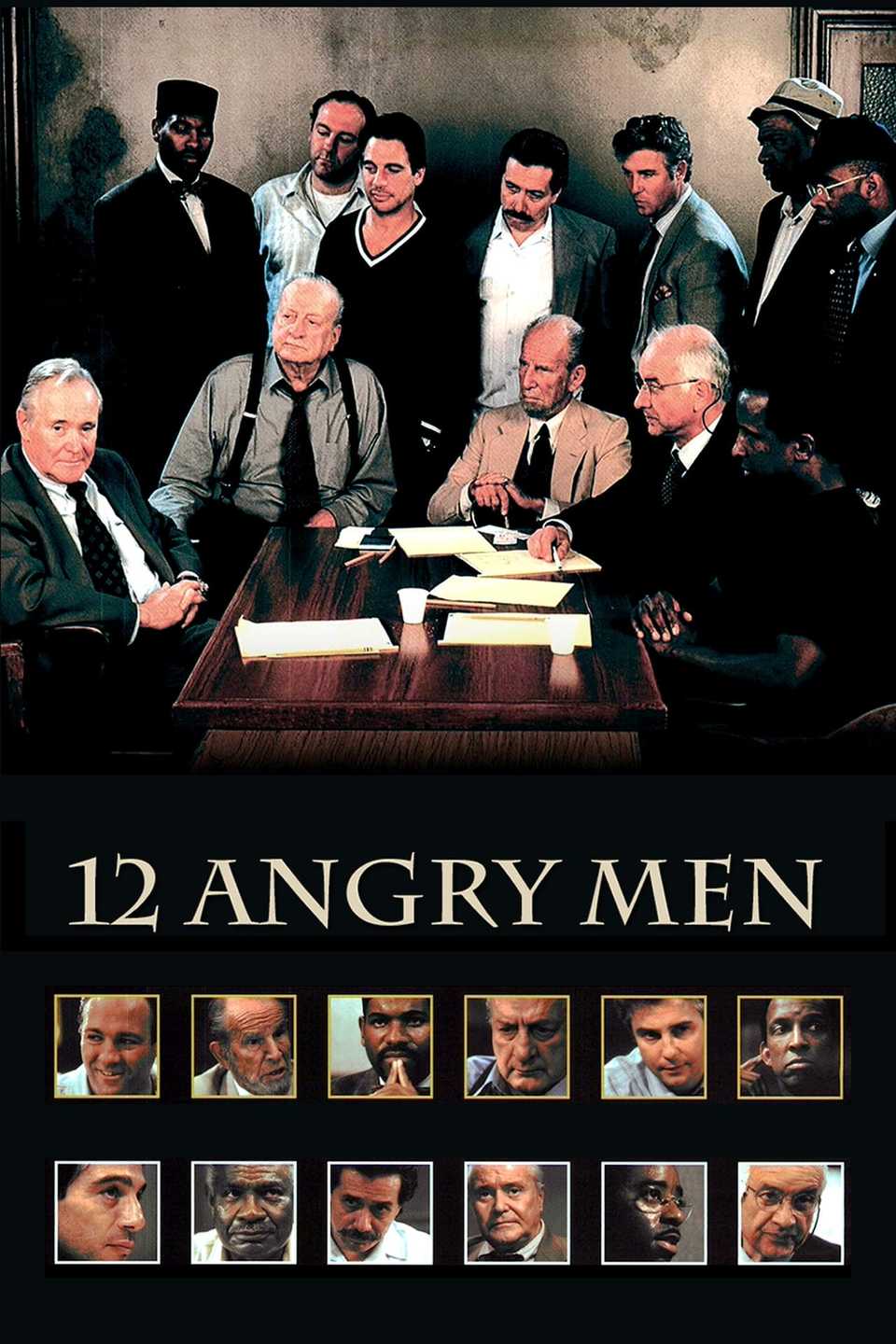The legendary Oscar-winning filmmaker William Friedkin left behind a legacy full of rule-breaking cinematic classics on the big screen. What gets often overlooked in the director’s filmography, however, is how he’s able to direct remakes of classic cinema into something timely and fresh. Friedkin’s final picture, The Caine Mutiny Court-Martial, was a perfect example of turning a World War II-set tale into a reflection of 21st-century warfare. Even more gripping before then was his 1997 made-for-cable adaptation of 12 Angry Men.
Under the direction of Sidney Lumet, the original 1957 adaptation of 12 Angry Men was a powerful showcase of Hollywood acting heavyweights led by Henry Fonda, conflicting against each other in the jury room over the guilt of a teenager charged with murder. The original cinematic adaptation of Reginald Rose’s 1954 teleplay was gripping due to Lumet’s ability to increase the tense atmosphere of the jurors at a brisk pace that feels like endless hours for the viewer. But when Friedkin remade the classic tale for Showtime, he gave it a modern edge by assembling a diverse cast that turned the juror room into a microcosm of racial tensions, politics, and the blurred line judicial system of the ‘90s.
What Is ’12 Angry Men’ About?
12 Angry Men’s narrative remains virtually unchanged from start to finish. An unnamed young defendant (Douglas Spain) stands trial for the murder of his father. The jury of twelve everyday New Yorkers is instructed to make a unanimous verdict, as the teenage boy faces the death penalty if found guilty. Initially, eleven of the jurors believe in the boy’s guilt, except for Juror 8 (Jack Lemmon), who believes that the prosecution’s evidence is more than meets the eye.
As hours pass, Juror 8 makes valid points regarding the boy’s murder weapon, convincing the likes of elderly Juror 9 (Hume Cronyn) and medical worker Juror 5 (Dorian Harewood). But it gets increasingly difficult to convince the others of the boy’s innocence, especially Juror 3 (George C. Scott), whose personal issues cloud his judgment. More and more insight into the boy, the weapon, and the circumstances of the murder only adds increasing pressure on Juror 8 to prove his viewpoints to avoid a deadlock with the verdict.
The most glaring change from the original 12 Angry Men is the way in which Friedkin put together a diverse cast to show how society has evolved since 1957. Right from the beginning, there’s the presence of a female judge (Mary McDonnell) on the bench, which was not commonplace decades earlier. As the racial makeup of the original 12 Angry Men cast was all-white, the Friedkin remake represents the New York melting pot by casting actors representing African Americans, Muslims, and Latinos. Harewood and Ozzie Davis represent working-class African Americans who understand the struggle of being black. More compelling, however, is the casting of Mykelti Williamson as Juror 10. Written in Rose’s teleplay as an outright racist, Williamson re-interprets Juror 10 as a resentful muslim looking down at minorities instead of uplifting them. His moment where his bigoted rant outrages Juror 5 and immigrant Juror 11 (Edward James Olmos) takes on an entirely new meaning by just a simple ethnic swap in casting.
How William Friedkin Made ‘12 Angry Men’ Stand on Its Own
While 12 Angry Men is filled with stars of the modern era, including Tony Danza, William Petersen, and a pre-Sopranos James Gandolfini, the remake’s challenge was having Lemmon take on the role that Fonda made legendary. Like his predecessor, Lemmon’s Juror 8 bucked the odds against his fellow jurors. But unlike Fonda’s classic, confident take on the role, Lemmon goes for an everyman kind of character, believing in the decency of people rather than judging a book by its cover. Lemmon is far from dignified in his portrayal. Loose collared and often sweating, Lemmon’s portrayal is more grounded in reality than the cut-and-dry take by Fonda.
As a director who changes his cinematic approach with each film, Friedkin dials back the camera techniques and homes in specifically on the performances. Gone is the Lumet style of increasingly tighter camera angles on the jurors as they each change their verdict. Friedkin goes for a Law & Order-style technique of documentary-level handheld camera movement, less of the stage production theatrics, and allowing the performances to reach volcanic levels of drama. The latter is true for Scott in one of his final film roles, playing the character originally played by Lee J. Cobb. Though not subtle in his personal hatred for the young defendant, Scott captures the mad rage of a man incapable of being loved by others past his hardened exterior.
Given that the ‘90s were full of dramas that re-examined America’s justice system in contrast to the ‘50s, it was appropriate for Friedkin’s 12 Angry Men remake to look at the disparity in how justice is handed out unequally. It’s a politically-charged tale that adds more power to the race and class tensions within that juror room, rising above the typical unfolding mystery of the crime itself.

12 Angry Men
- Release Date
-
August 17, 1997
- Runtime
-
117 Minutes










